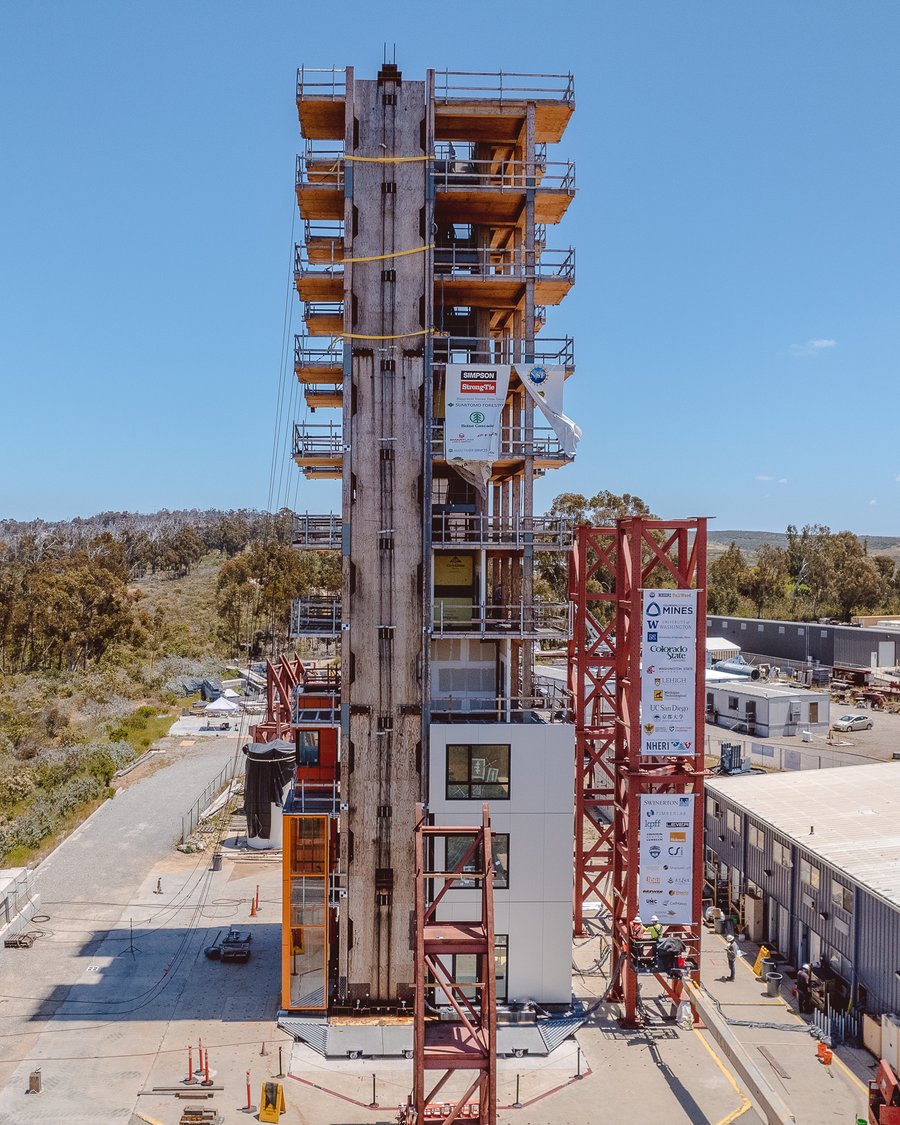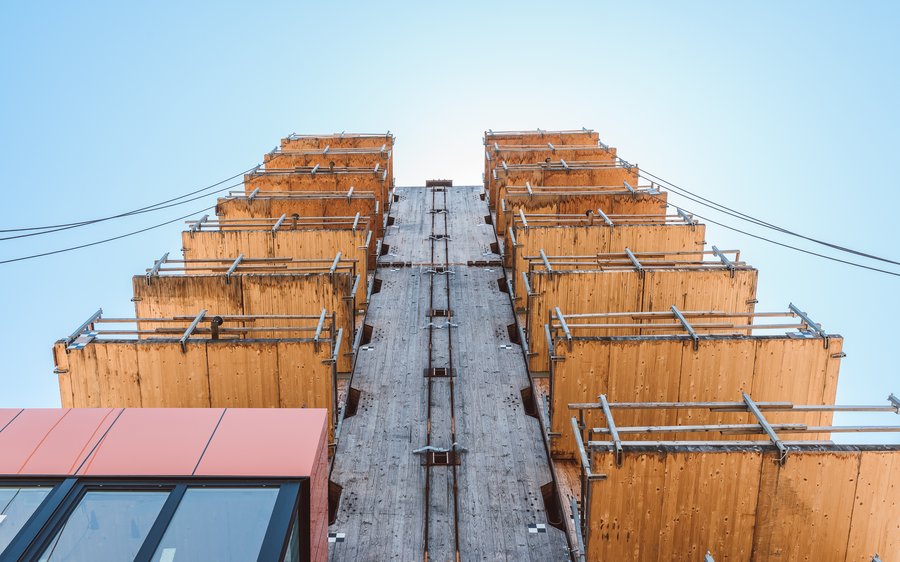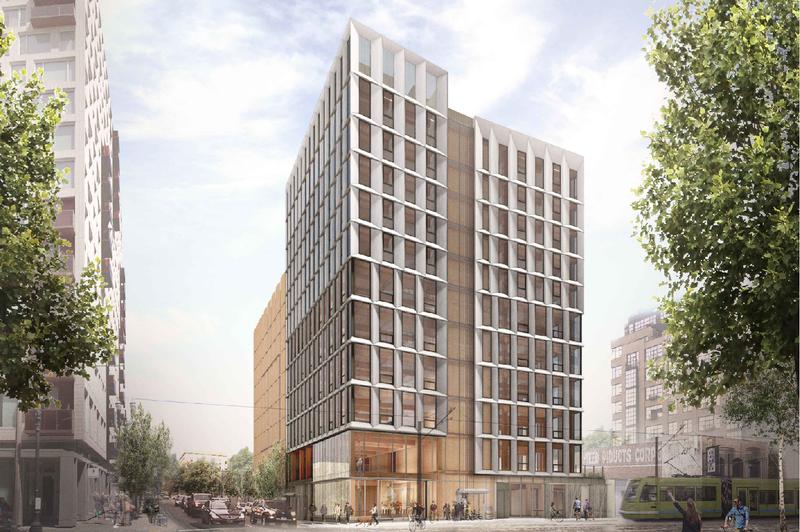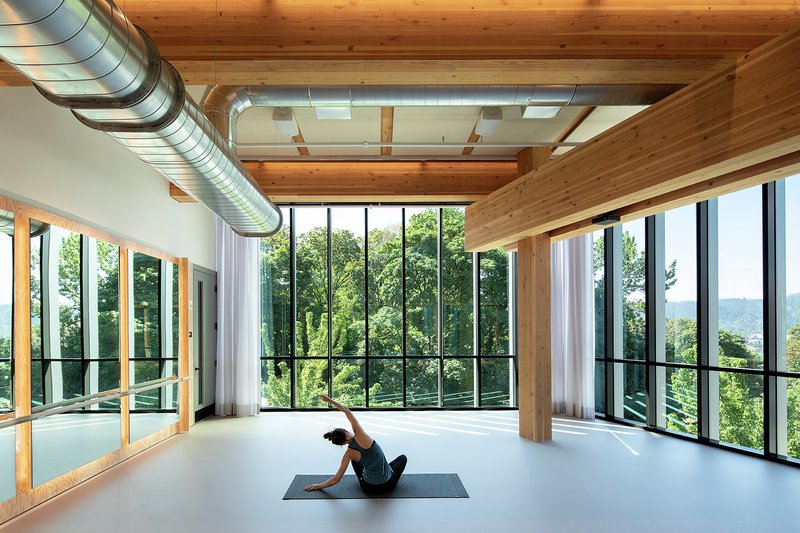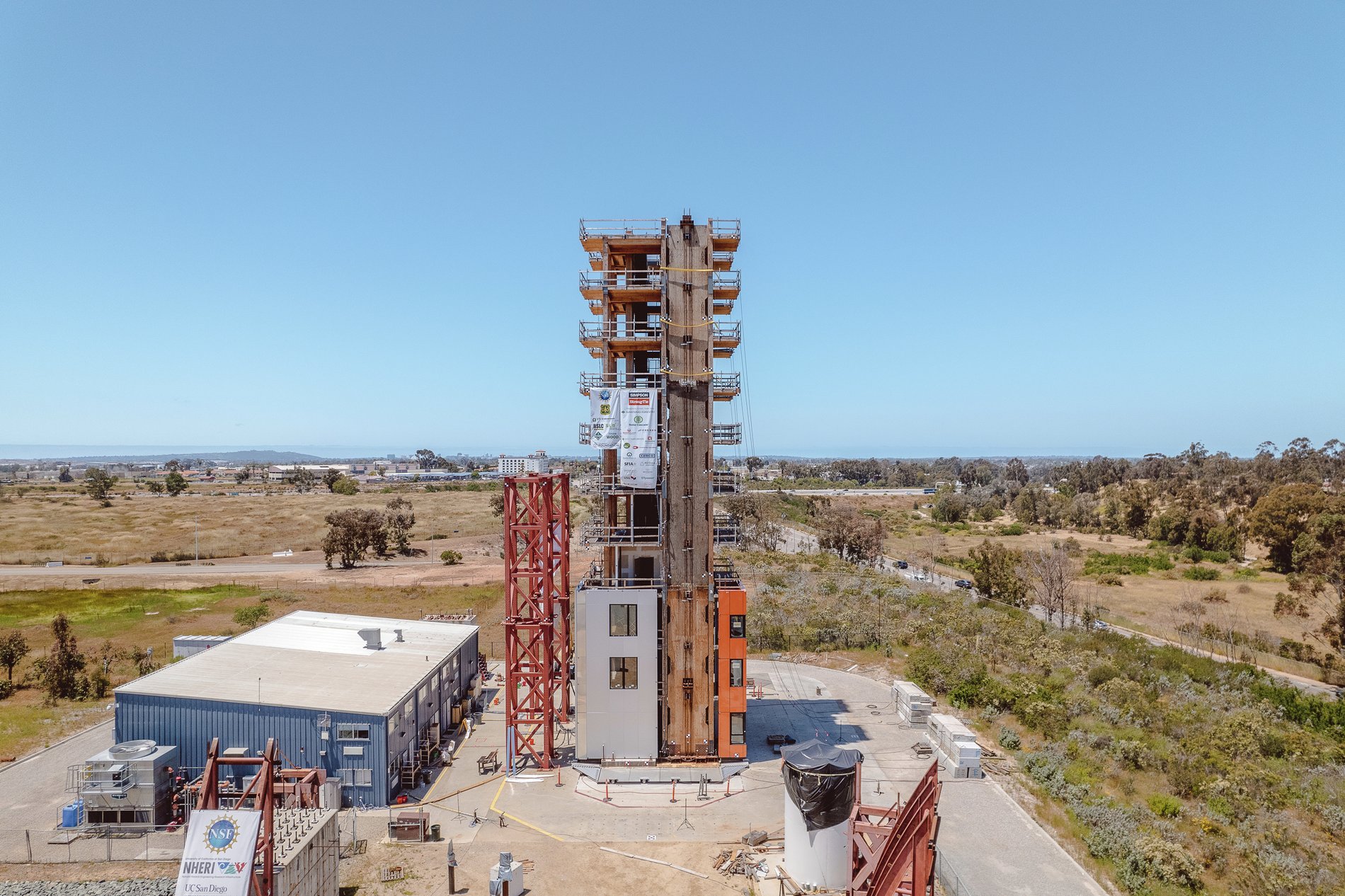
In 2017, LEVER joined the NHERI TallWood Project, an interdisciplinary research collaborative of university and industry professionals funded by the National Science Foundation to study the seismic resiliency of wood structures. During that year, our team worked to build on our research from the Framework project to develop a series of wood structure archetypes that could be used to study the resiliency of wood structures, including a two-story structure that we built and tested on a shake table.
The 10-story structure is a high-rise building, with higher loads and a much larger scale than the low-rise two-story structure tested in 2017. It is the tallest wood structure put to a full-scale seismic test, yielding unprecedented data. The two-story structure was tested on a two-axis table, meaning that the shaking motion was strictly side to side. The 10-story test occurred on a three-axis table, which simulated a more realistic shaking motion that better replicates the experience of an earthquake and will give us better information about the structure’s resilience.
NHERI TallWood Project’s research will provide the foundation for new engineering design guides for incorporating rocking walls (like those we developed for Framework) into seismically resilient tall wood structures. By sharing our testing data for analysis, our team hopes that our work will help others to navigate code review and requirements in new jurisdictions—and perhaps one day, it will inform broader code updates.
